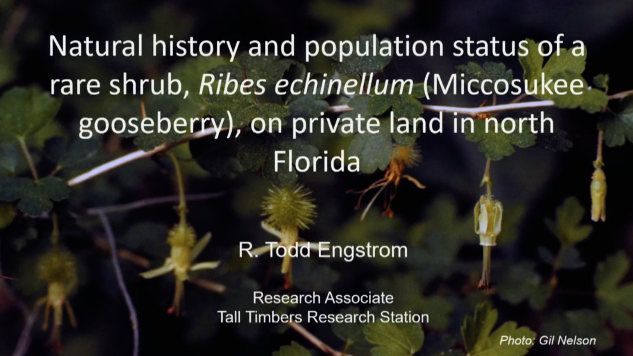
R. Todd Engstrom, Tall Timbers Research Station and Land Conservancy The Miccosukee gooseberry (Ribes echinellum) was discovered in on private land in Jefferson County, Florida, in 1924. A second population was located in McCormick County, South Carolina, in 1957, but this is a study of the Florida population only. The species was classified as federally […]
Read More…
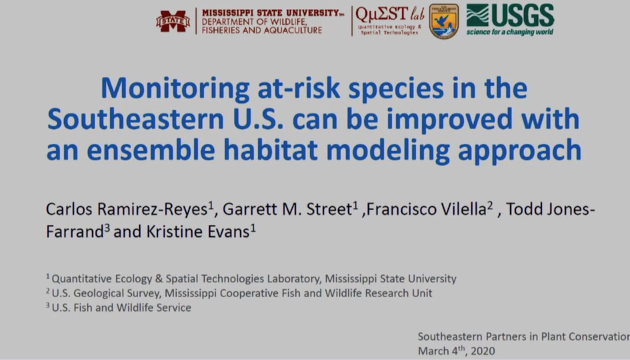
Dr. Carlos Ramirez-Reyes1, D. Todd Jones-Farrand3, Garret Street1,2, Francisco Vilella4, Kristine O. Evans 1,2 1. Department of Wildlife, Fisheries and Aquaculture, Mississippi State University 2. Quantitative Ecology & Spatial Technologies Laboratory, Mississippi State University 3. U.S. Fish and Wildlife Service 302 Natural Resources, University of Missouri 4. U.S. Geological Survey, Mississippi Cooperative Fish and Wildlife […]
Read More…

Amy Jenkins, Florida Natural Areas Inventory Chad Anderson, Florida Natural Areas Inventory Jason Drake, United States Forest Service Understanding the historic conditions and habitats in a region is a vital first step to planning restoration and management activities. With our partners, US Forest Service, Florida Forest Service, and the Florida Fish and Wildlife Conservation Commission, […]
Read More…
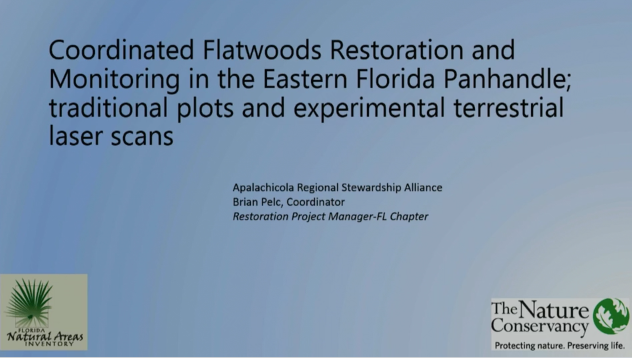
Brian Pelc, Restoration Project Manager, The Nature Conservancy-Florida. Coordinator of the Apalachicola Regional Stewardship Alliance. Chad Anderson, Ecologist, Florida Natural Areas Inventory Wet and Mesic Longleaf Pine Flatwoods (and structurally comparable longleaf ecosystems) play a critical role in maintaining the high biodiversity of southeastern forests. Previous flatwoods work has identified as many as 191 vascular […]
Read More…
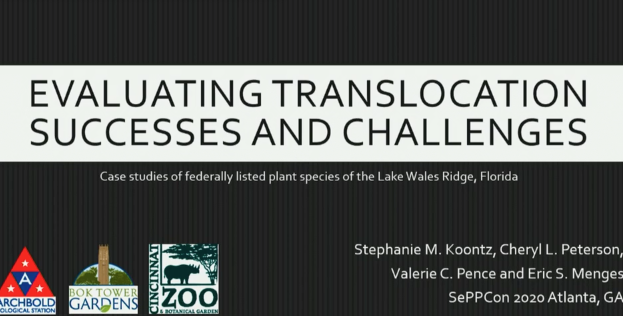
Stephanie Koontz, Archibold Biological Station, Cheryl L. Peterson, Bok Tower Gardens, Valerie C. Pence, Cincinnati Zoo and Botanical Garden, Eric S. Menges, Archbold Biological Station Translocations are an increasingly utilized tool for rare plant conservation. Urbanization along the Lake Wales Ridge, in southcentral Florida, has led to 85% loss of native Florida scrub and sandhill. […]
Read More…
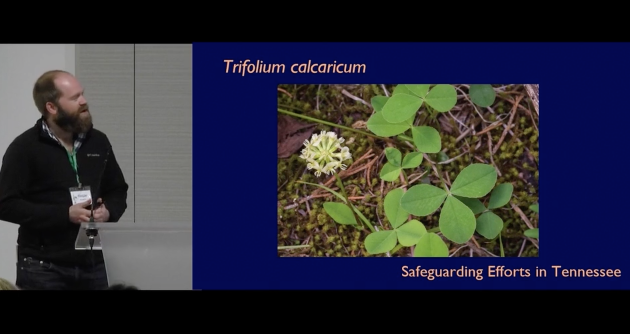
Margi Hunter, Tennessee Naturalist Program, Cooper Breeden, Southeastern Grasslands Initiative, Austin Peay State University, Tennessee Plant Conservation Alliance The lack of funding and resources necessary to conserve many of our most imperiled species and communities is a ubiquitous problem. In the absence of traditional support, more grassroots and citizen-led efforts are essential to ensure the survival […]
Read More…
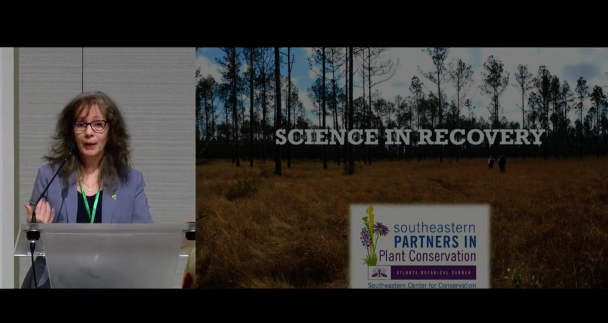
Dr. Vivian Negrón-Ortiz, U.S. Fish & Wildlife Service, Ms. Melanie Kaeser, U.S. Fish and Wildlife Service To protect and manage species listed under the U.S. Endangered Species Act requires the use of the best available science. Field-based studies on topics such as demography, reproductive biology, and seed ecology have provided sound conservation strategies for many […]
Read More…
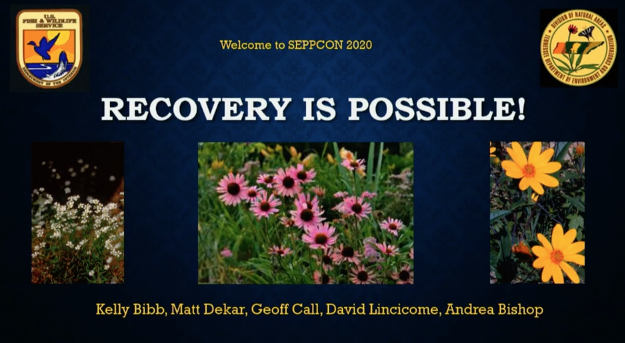
Kelly Bibb, U.S. Fish & Wildlife Service Geoff Call, U.S. Fish & Wildlife Service, David Lincicome, Natural Heritage Program Manager, Tennessee Department of Environment and Conservation (TDEC) Andrea Bishop, Natural Heritage Program Botanist, TDEC – Retired Effective partnerships guided by shared goals, such as recovery criteria, make it possible to recover endangered and threatened species […]
Read More…
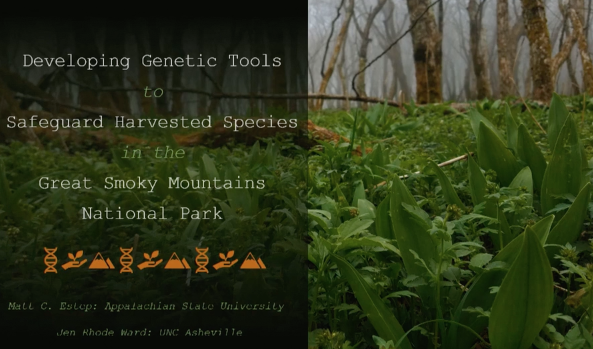
Dr. Matt Estep, Appalachian State University Jennifer Rhode Ward, University of North Carolina at Asheville Many plant species are being driven towards rarity due to exploitation for food, medicine, or the nursery trade. Land managers in the Smoky Mountain National Park are particularly concerned about two plant species: cutleaf coneflower / Sochan (Rudbeckia laciniata), and […]
Read More…
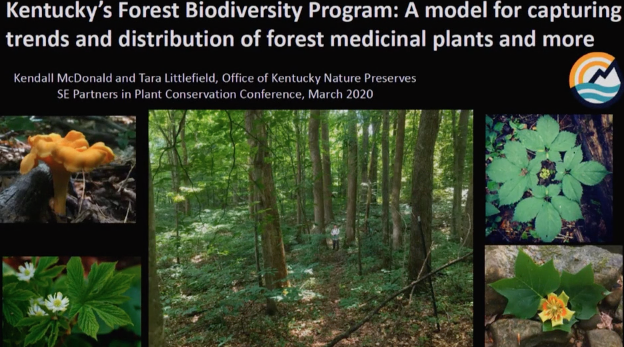
Kendall McDonald, Tara Littlefield, Office of Kentucky Nature Preserves The Office of Kentucky Nature Preserves (OKNP) is the natural heritage and natural areas program for Kentucky. OKNP maintains the Kentucky rare species database, and acquires and manages natural areas and nature preserves that host high quality communities and rare species. In 2019, OKNP created the […]
Read More…
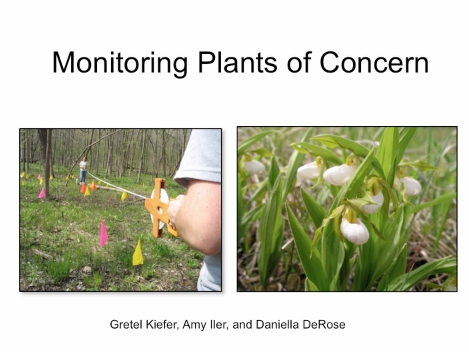
Daniella DeRose, Chicago Botanic Garden Chicago Botanic Garden’s Plants of Concern (POC) program is a collaboration between citizen scientists, natural resource managers, and researchers to collect data on rare plant populations in northeastern Illinois. The primary goal is to identify best conservation practices, while creating awareness and providing education on why conservation matters. POC engages […]
Read More…










